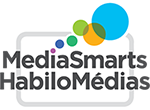Companion Reading
Tell students that you’re going to focus on companion reading first, and then have them access the student chapter Companion Reading or play it in fullscreen.
After students have watched the video, ask:
What are some examples of companion texts mentioned in the video?
- Search engines
- Online encyclopedias
- Trusted news sites
- People you trust (parents, teachers)
- Fact-checkers
Remind students that a companion text should be able to tell you three things about a source of information:
Do they know about the topic?
For example, somebody who has lived somewhere their whole life would know a lot about that place.
Do they have a process for making sure their information is accurate, and for correcting mistakes?
For example, scientists do experiments to make sure their theories are right, and they also correct other scientists if they can’t replicate their findings.
Do they have a motivation to give you accurate information?
For example, someone who reports the weather wants to give you good information so you’ll keep watching or reading them.
A reliable newspaper has knowledge about news events because they send reporters to cover stories. They have a process for fact-checking to make sure that the news they print is accurate and print corrections if they make mistakes, and most newspapers are motivated to give you accurate information because that’s what people buy them for.
What other examples can students think of that could tell you those three things about a source?
- Examples might include: print encyclopedias, librarians, people you know who are an expert on a topic.
Sources we use to help us verify information of find out if another source is reliable.
